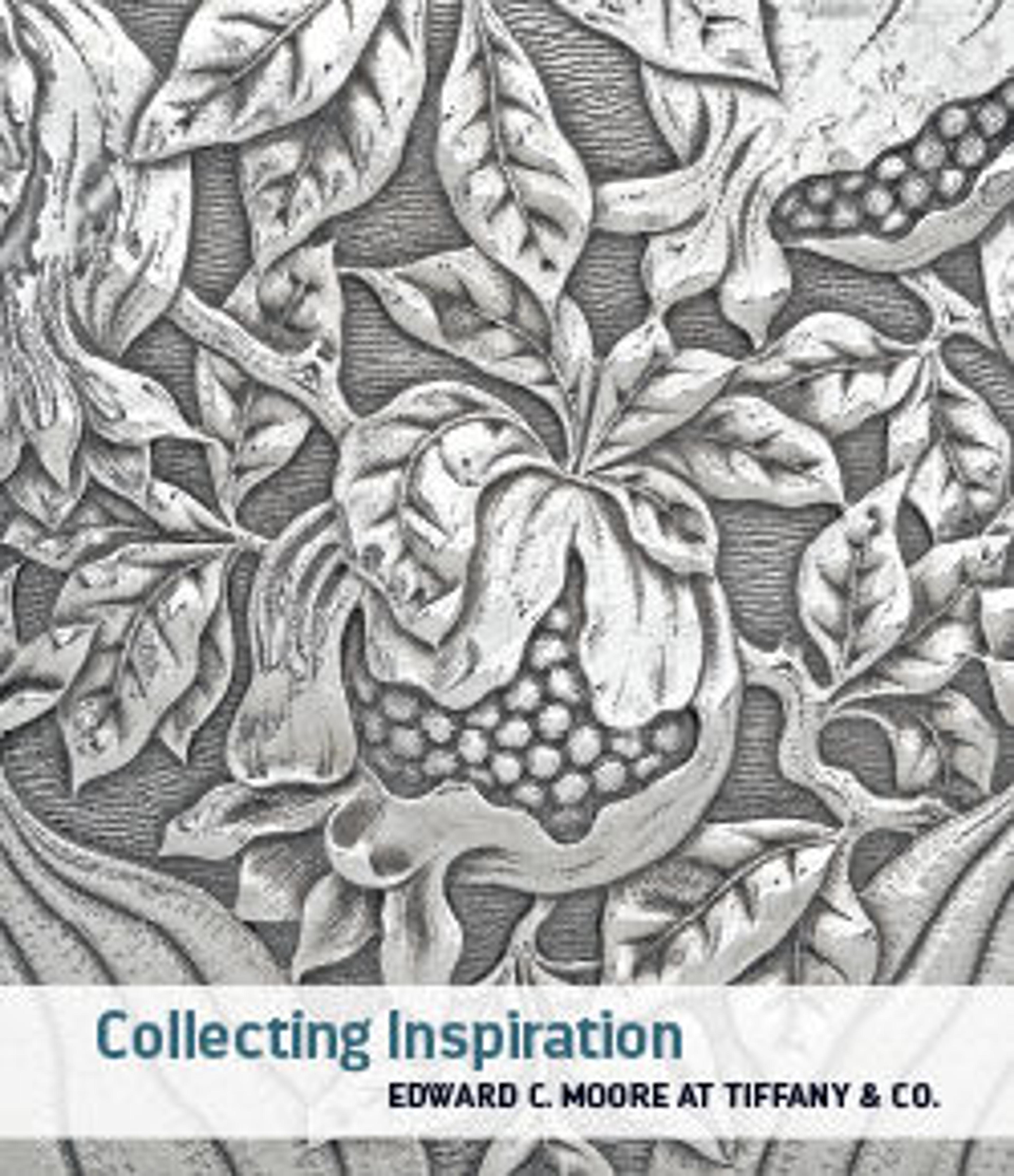Mustard Pot
Following the opening of Japan to the West in the 1850s and the subsequent display of Japanese art at international expositions, the Japanese taste began to captivate American consumers. In response, designers such as Edward C. Moore at New York’s Tiffany & Co. introduced a range of objects inspired by Japanese art works, including ceramics, metalwork, textiles, prints, lacquerware, and netsuke. The decoration on this mustard pot is particularly unusual and innovative. Its baluster form is completely transformed by the asymmetrical inset panels of mixed metal alloys—one of patinated copper and gold (a direct attempt to imitate Japanese Shakudō), and another of patinated copper, platinum, and iron—enclosed by scrolled "Snake Skin" borders. The mottled, multicolored surface also evokes the swirling array of colors observed in Moore's collection of ancient mosaic and core-formed glass. Labeled in the Tiffany & Co. Archives as "Mustard to go with Pepper 5493," this is one of only six decorated versions produced. The Tiffany Archives also retains the Hammering & Inlaying Design drawings for this particular version (#853), which at a cost of $35 was the most expensive iteration.
Artwork Details
- Title: Mustard Pot
- Maker: Tiffany & Co. (1837–present)
- Date: ca. 1879
- Geography: Made in New York, New York, United States
- Culture: American
- Medium: Silver, copper, gold, patinated copper-gold alloy, patinated copper-platinum-iron alloy, and niello
- Dimensions: 3 3/16 × 2 1/2 × 2 in. (8.1 × 6.4 × 5.1 cm)
- Credit Line: Purchase, Friends of the American Wing Fund and Emma and Jay A. Lewis Gift, 2016
- Object Number: 2016.689
- Curatorial Department: The American Wing
More Artwork
Research Resources
The Met provides unparalleled resources for research and welcomes an international community of students and scholars. The Met's Open Access API is where creators and researchers can connect to the The Met collection. Open Access data and public domain images are available for unrestricted commercial and noncommercial use without permission or fee.
To request images under copyright and other restrictions, please use this Image Request form.
Feedback
We continue to research and examine historical and cultural context for objects in The Met collection. If you have comments or questions about this object record, please contact us using the form below. The Museum looks forward to receiving your comments.
